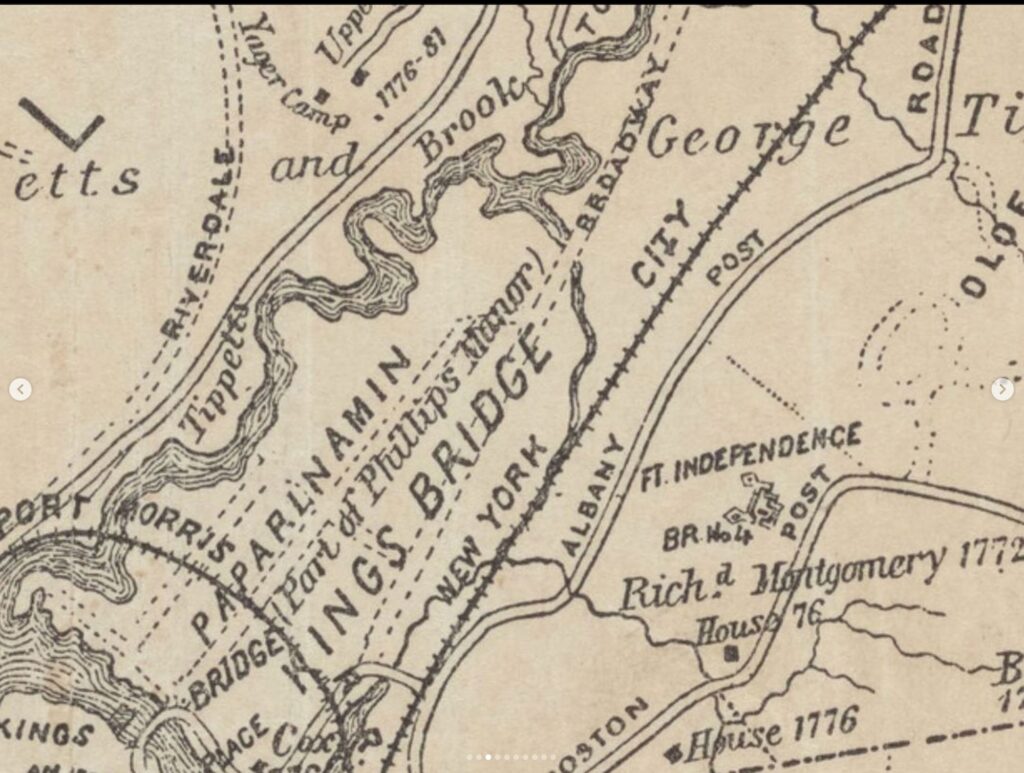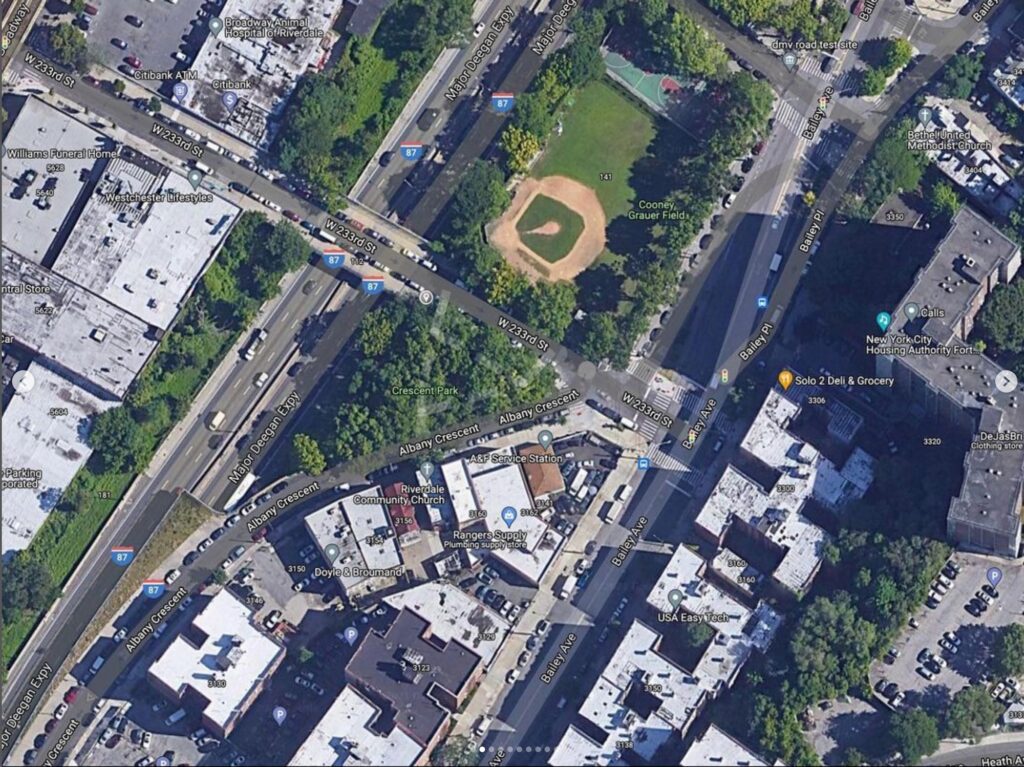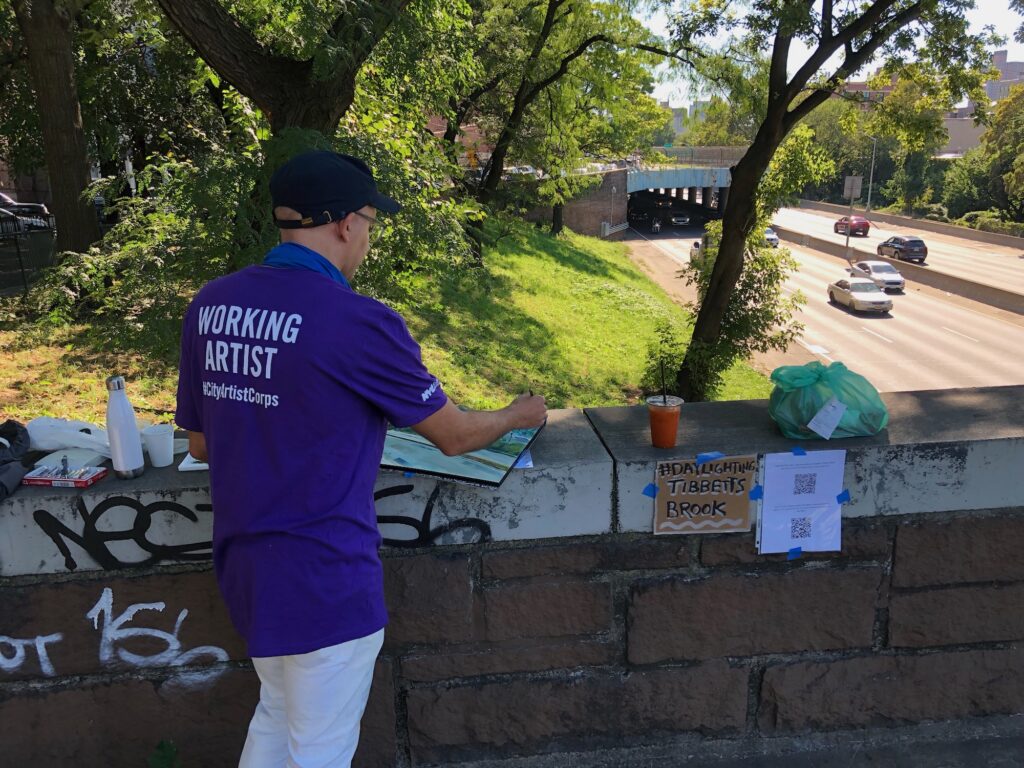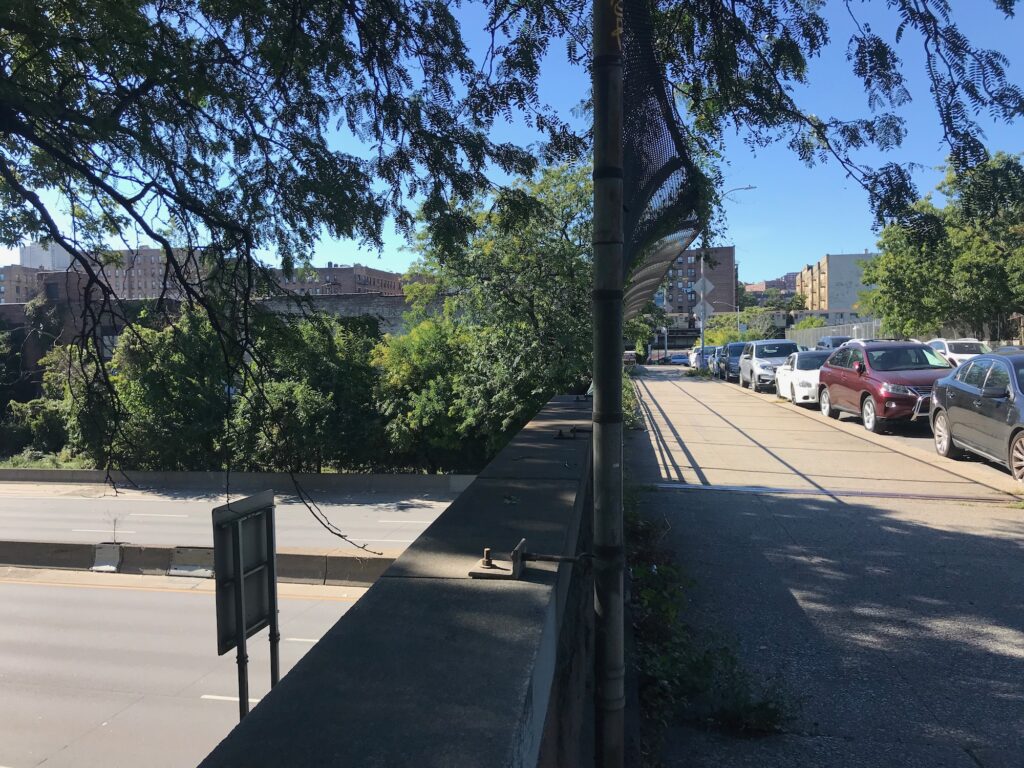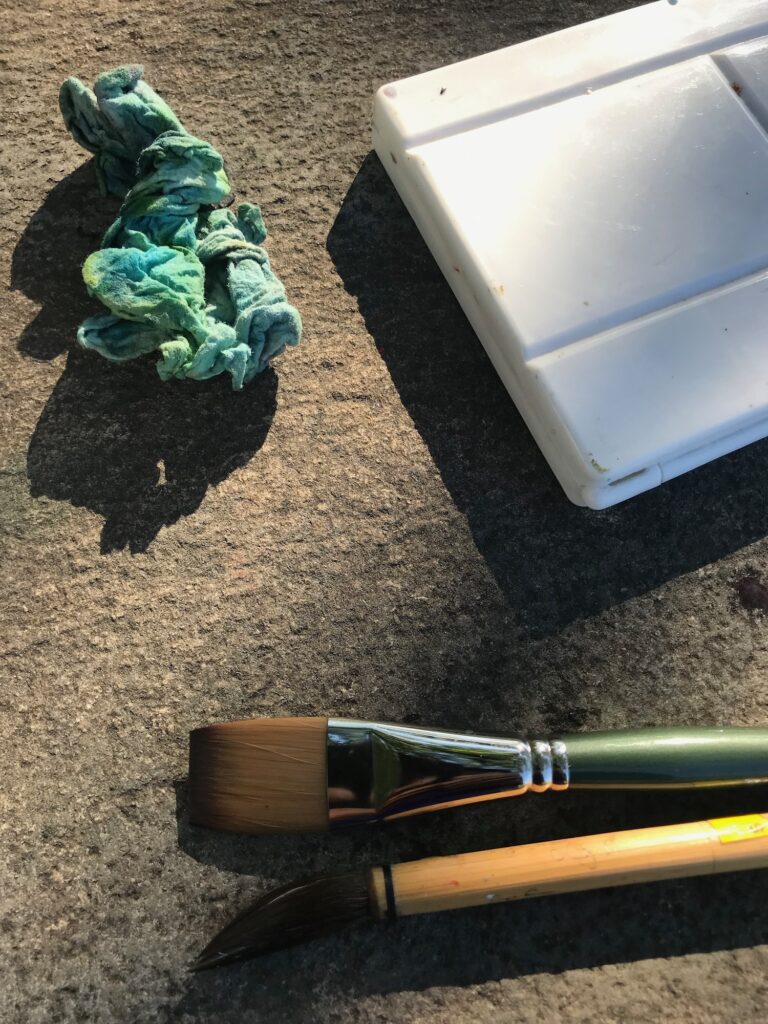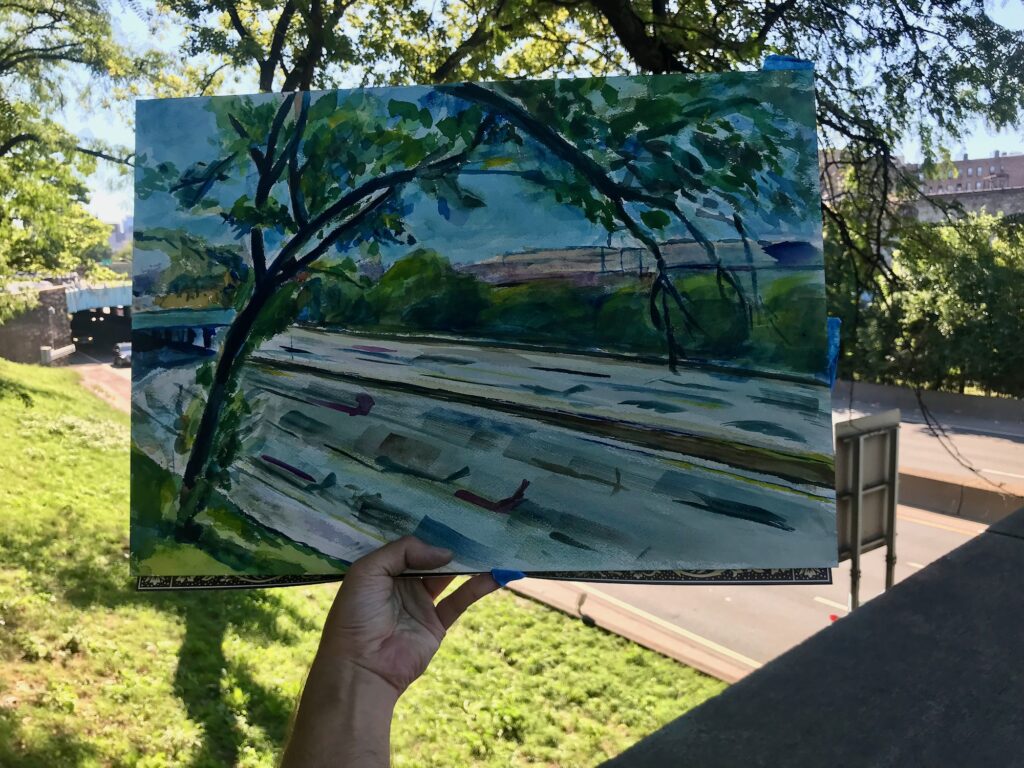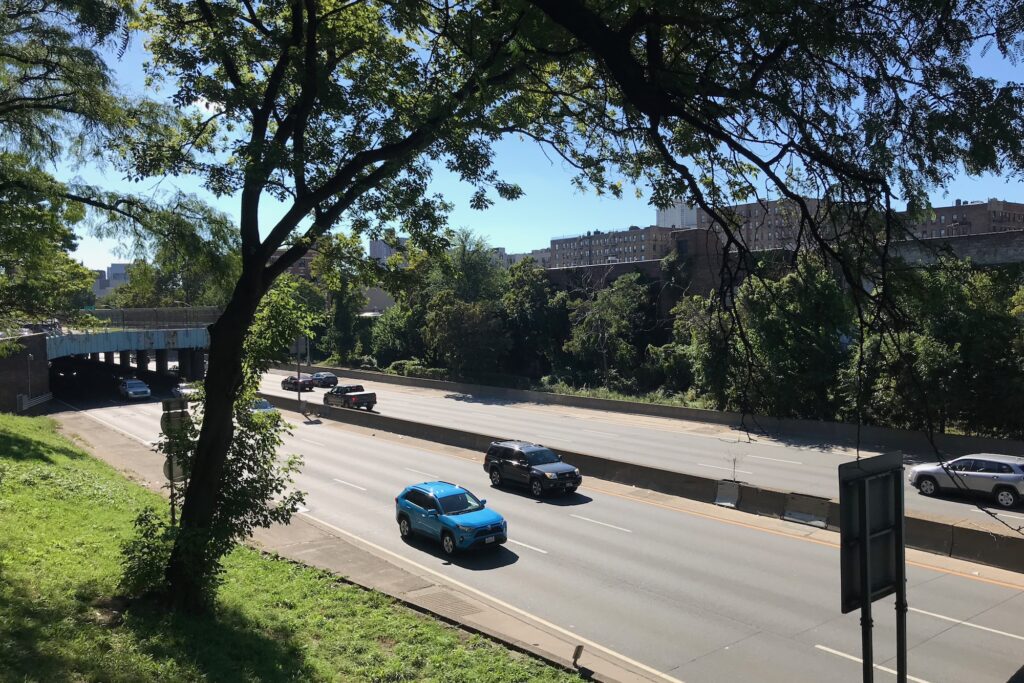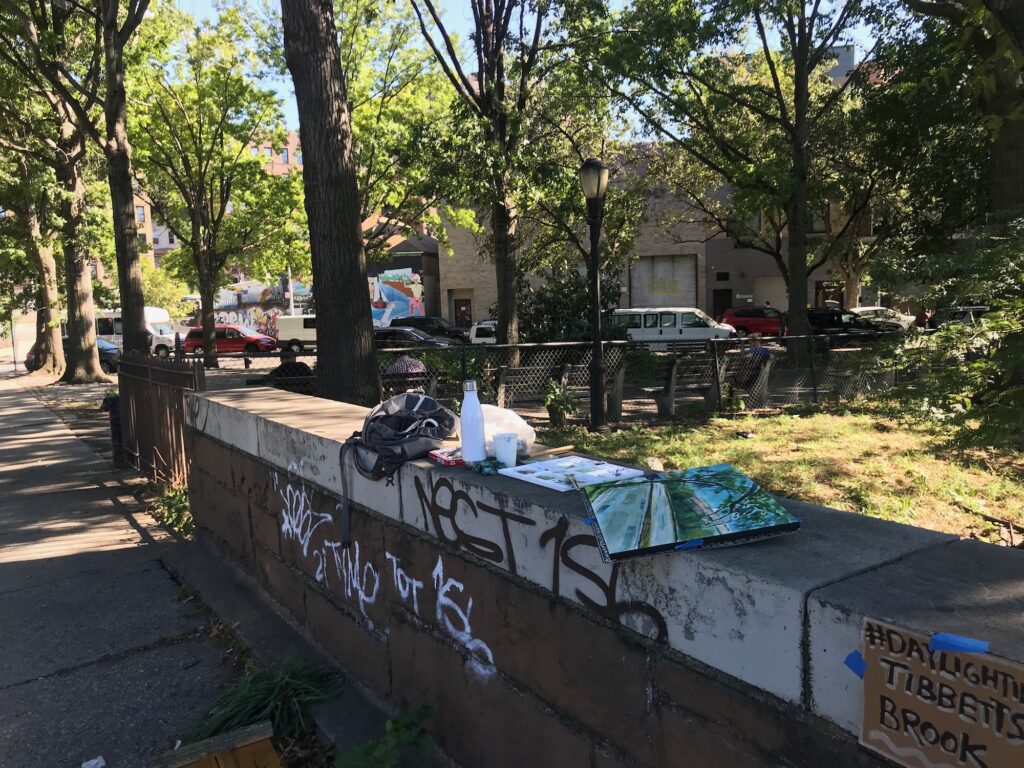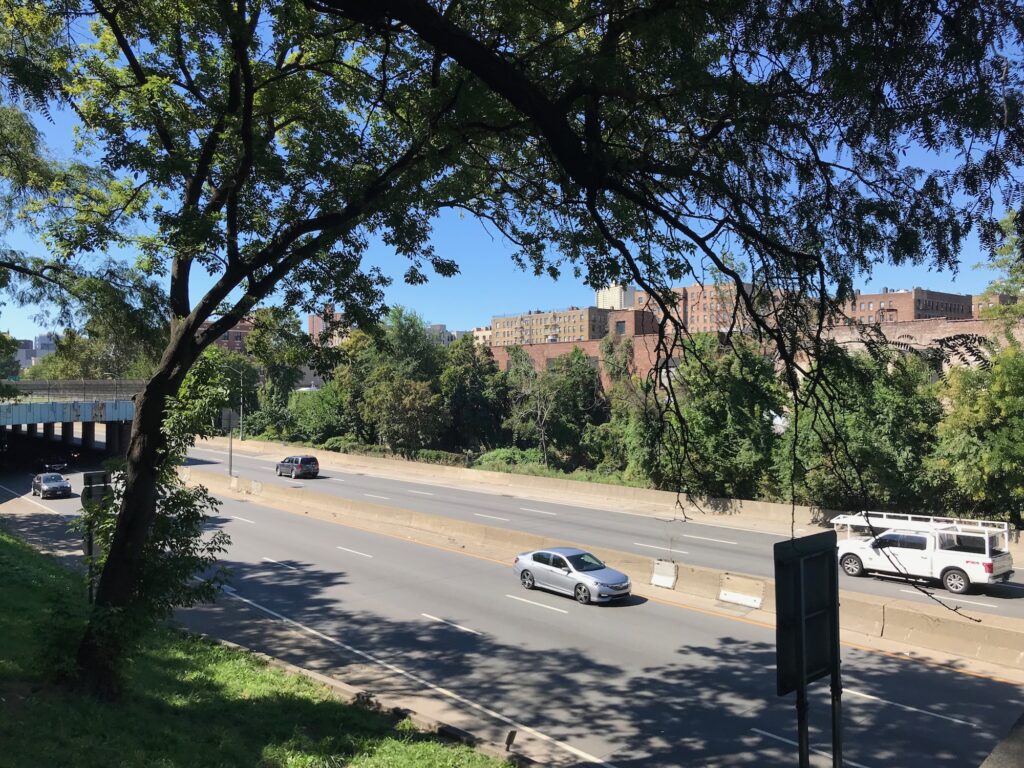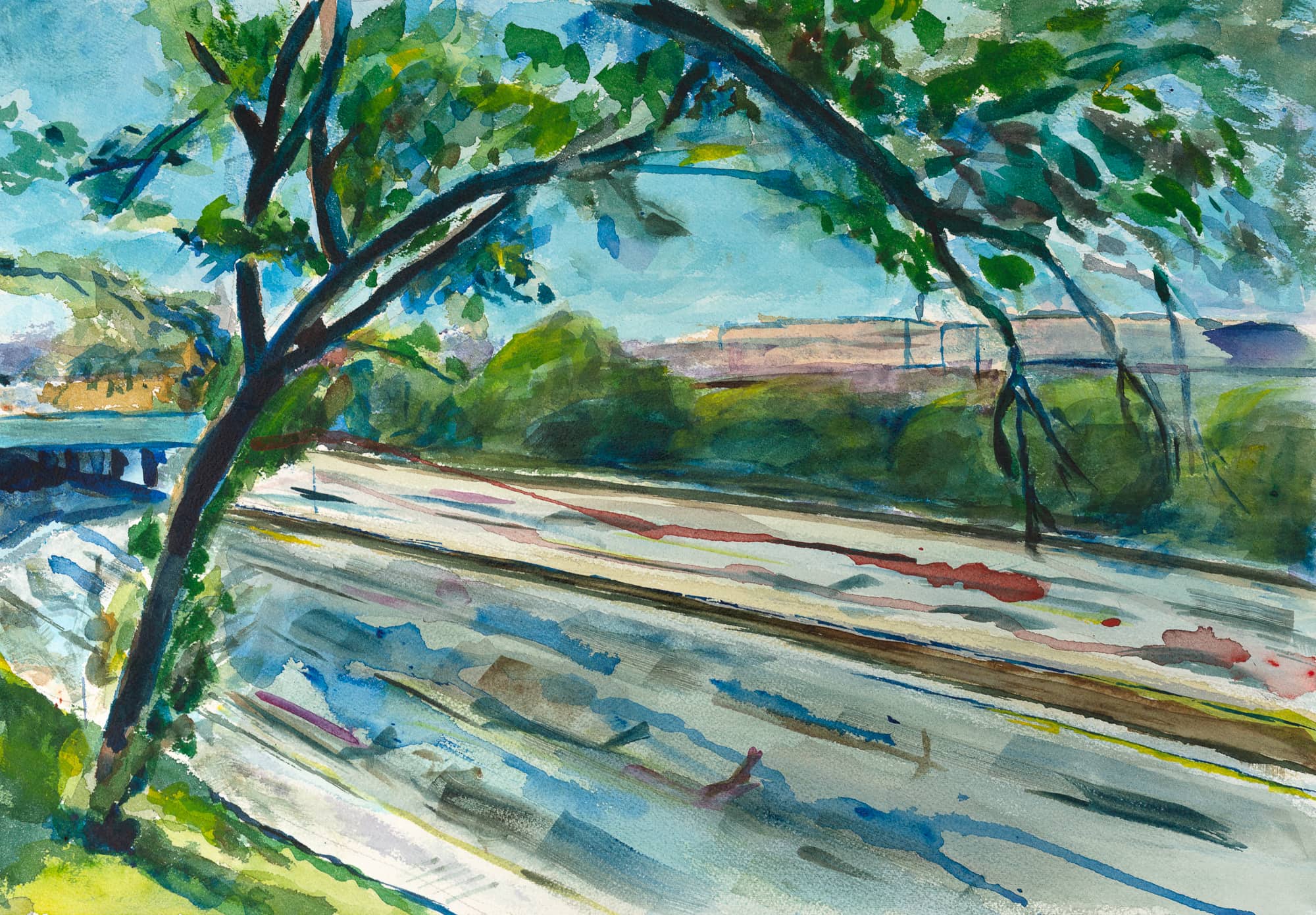Yesterday’s painting session found me beneath the intermittent shade of a black locust tree along W 233rd Street, near Crescent Park. The sky was a vivid blue, the sun’s warmth a touch too intense. Thankfully, this spot offered both shade and an unobstructed view, unlike the fenced areas. Directly across the Major Deegan Expressway lay the #daylightingtibbetts corridor, visible from my chosen vantage.
This stretch has a bunches of trees of moderate height, growing higher the farther the decommissioning of the rail line fades into the past. It was hard to identify many of the trees from afar, but I spotted 2 London plane, a handful of tree-of-heaven, many mulberries, and one Paulownia tomentosa, or “Princess Tree,” native to China. The soft lightweight seeds were commonly used as a packing material by Chinese Porcelain exporters in the 19th century and packages would often leak or burst open in transit, scattering seeds along rail tracks. I wondered if this tree got here from that lineage. There are also a few “snags” in this stretch, which is the term for a standing dead tree, valuable habitat and relatively unusual in NYC. There are random refrigerators strewn behind the buildings and the ground floor businesses deal with frequent flooding.
Crescent Park, though small, is punctuated with numerous benches, always occupied by someone. I anticipated my painting would draw inquisitive glances, but the park-goers remained engrossed in their own worlds, occasionally engaging in brief exchanges with acquaintances, likely heading to or from the nearby Broadway shops.
The park seems to function as a micro-neighborhood public square. A majority of those passing seemed to be Spanish speaking, and I got a handful of “thumbs up” and smiles from passersby, and the occasional “it’s beautiful.” Many folks came and went to cars parked along the street directly behind me.
Crescent park is named after the nearby Albany Crescent, a curious curved artifact of the Albany post road, used for mail delivery, following the original Wickquasgeck Trail. When the Major Deegan was built, this Albany Crescent was kept, extending above the highway— you can see an indication of it in the left hand side of the painting. Albany Crescent was once an important junction, where Albany Post Road and Boston Post Road crossed each other.
One young girl of about 10 walked past and said “I like your painting, Mister.”
Another family smiled with a thumbs up as they passed, the woman with the stroller stopped and pointed. I walked closer toward her misunderstanding the gesture, only for us all to laugh when I realized her partner had approached from the other side and was admiring my painting up close. “Wow you painted the street, I appreciate you! Congratulations!” With an approving sideways pat on the shoulder.
It remains a surprising revelation to me that no one has yet questioned my choice to paint facing the highway and the vacant rail corridor. This observation has led me to reflect on my own assumptions about this landscape.
An older man with matching red glasses, shirt, and shopping cart stopped to share that he likes to paint and makes abstract work. He knew about the Daylighting project, recounting fairly detailed knowledge about the watershed. We both agreed it would be a great thing for the area. We introduced ourselves with a laugh – he is “Neil” and I am “Noel.” “Are you from the area or are you from Riverdale?” I told him “Van Cortlandt Village” and he seemed pleased. Neil was perhaps in his mid 70s. Tibbetts Brook was buried only about 100 years ago.
I found a map from the late 1800s that shows a tributary of Tibbetts intersecting with the rail corridor around where I was painting.
Land has a way of maintaining its expression. The water of Tibbetts Brook, the travel corridor along the north south direction
I had a ten minute conversation with Francesca, a woman from the Dominican Republic who barely spoke English. I barely speak Spanish, yet we exchanged phone numbers and she told me to call her if I visit the DR. She paints a bit herself, and comes to The Bronx to visit her brother who lives in the area. I was wondering if I was “done”- Francesca declared on her own, “Finito, it’s beautiful.” After she left, I saw her a block away stop to take some artful photographs of a few pigeons.
That moment in particular felt like a small foothold for the concept of a new park / daylighted stream in this landscape. In that moment, that abandoned rail corridor produced an aesthetic experience and a neighborly conversation across languages and countries, a preview of possibilities. Inviting this stream ecosystem into this land will also, by necessity, bring with it a slew of unexpected cultural ecosystem services, turning forgotten land into essential local fabric.
